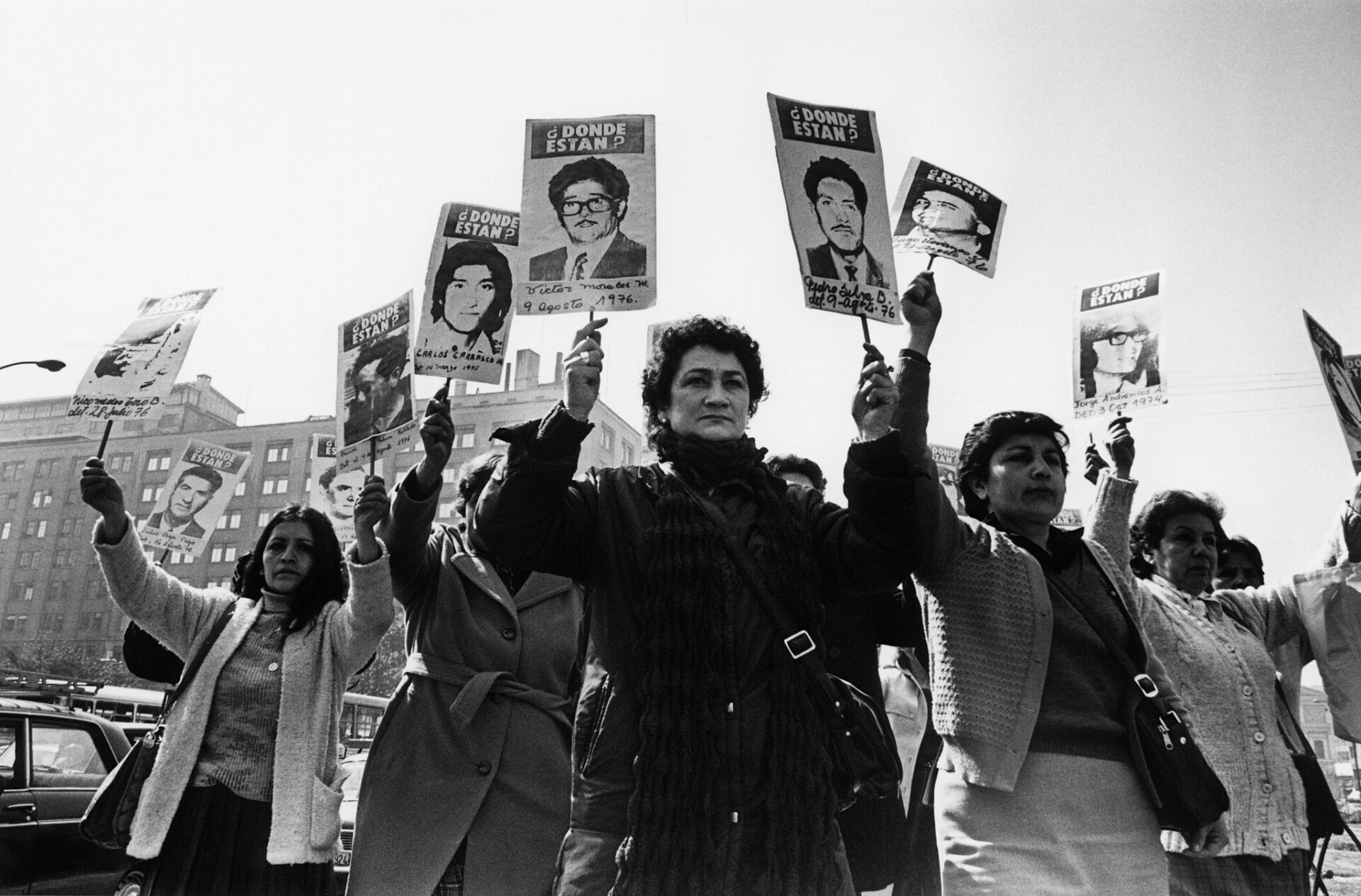During a meeting at the White House in 1971 between US President Richard Nixon and Brazilian President Emílio Garrastazu Médici — the third president of the country’s military dictatorship — both leaders discussed the possibility of the Chilean military overthrowing Allende. Medici replied in the affirmative and confirmed to Nixon that Brazil was working towards that end. “We must try and prevent new Allendes and Castros and try where possible to reverse these trends,” a declassified document regarding the meeting partially reads.
With a foot in the door in Chile prior to the US-backed Chilean dictatorship of Augusto Pinochet in 1973, Brazil played a prominent role in destabilizing the country and, according to declassified documents, not necessarily in a role subservient to US interests. Brazil was the first country to give diplomatic recognition to Pinochet on Sept. 12 at 8:45 p.m., just a day after the coup, “without discussing with friendly states”, as was the custom. Then US Secretary of State Henry Kissinger accepted the move amid pressure stemming from allegations of CIA involvement in the coup that were already surfacing.
Detentions, Disappearances, and Executions
From 1964 to 1985, Brazil’s military junta was marked by disappearances, torture, and detentions. More than 430 people were killed or disappeared. Much information regarding Brazil-US collaboration on Chile remains classified. In 1974, director of Central Intelligence William Colby sent Kissinger a memo that affirmed that the US knew about, and approved of, Brazil’s persecution of its opponents. The document asserts that Brazilian President Ernesto Geisel had decided that Brazil should continue to use “extra-legal methods,” and that Brazil should only execute “dangerous subversives.”
In an interview with the National Security Archive (NSA), researcher and author Roberto Simon stated,“Brazil provided direct support to, and a model for, the Pinochet dictatorship.” It trained Chilean officers and collaborated with Chile to eliminate political exiles.
Until 1983, Brazil voted against all resolutions condemning the abuse of human rights by the Chilean dictatorship.
Declassified documents from Brazil’s embassy in Santiago also show that Brazilian military intelligence agents were assisting the Chilean military in the torture and execution of Chilean detainees at Chile’s National Stadium in the early days of the coup.
From 1973 to 1976, Brazil was a strong and immediate diplomatic ally for Chile. Besides supporting Chile at the Organization of American States (OAS), and with European countries that condemned the dictatorship, Brazil also helped Pinochet with a $50 million loan two months after the coup, and provided funding for Chile’s surveillance equipment. Until 1983, Brazil voted against all resolutions condemning the abuse of human rights by the Chilean dictatorship.
Brazil’s Butantan Institute
Brazil’s Butantan Institute was established in 1899 after a plague outbreak to produce anti-plague serum, and formally recognized as an institute in 1901. Now a center for biomedical research and preventing diseases, the Butantan Institute also had a history of collaborating with the Pinochet dictatorship, for which it produced the botulinum toxins that were used to murder the junta’s opponents.
In 1972, the Butantan Institute, a prestigious institution in Sao Paulo, Brazil, commenced its research on clostridium botulinum — a toxin that can cause paralysis and death in humans — and which was discovered in the exhumed remains of Chilean poet Pablo Neruda. When Neruda died in 1973, the dictatorship disseminated the narrative that advanced prostate cancer had killed him. However, Neruda’s chauffeur and assistant Manuel Araya consistently maintained the poet had been poisoned at the Clinica Santa Lucia, while awaiting his clearance from the Mexican embassy to go into exile.
While the first evidence of botulinum toxins being delivered to Chile from Brazil dates back to 1981, Brazil’s involvement in Chile dates back to Eduardo Frei Montalva’s presidency from 1964 to 1970. The former president of Brazil’s Truth Commission, Adriano Diogo, stated that Butantan “could have produced” the toxins found in Neruda’s remains, in which case Brazil’s collaboration with Chile’s right-wing would also indicate an early complicity in the elimination of opponents. At the time of Neruda’s death, it was assumed that the dictatorship’s foray into biological and chemical weapons had not yet started.
Photos from the Butantan Institute’s archives which surfaced recently show that on June 1, 1979, commander-in-chief of the Chilean Armed Forces Fernando Matthei paid a secret visit to Butantan with other Chilean officials.
Tested on Prisoners
In 1981, the Chilean military’s bacteriological department requested strains of botulinum toxin from the Bacteriological Institute, which in turn ordered a consignment from Brazil. The package containing the toxins arrived in Chile through diplomatic mail to the presidential palace La Moneda, and was delivered to the military.
In December that same year, the toxin’s efficacy was tested on a group of eight detainees, four of which were members of the Revolutionary Left Movement (MIR). The toxin was added to their food, killing two of the detainees. The timing of this testing raised suspicions concerning the possible murder of Frei, who, between November 1981 and January 1982, was hospitalized at the Clinica Santa Maria, requiring surgical interventions. The clinic was serviced by doctors who worked with DINA and which also had ties to the Clinica Santa Lucia, where Neruda was killed.
In January 2014, four former DINA agents were charged with the murder of Frei and the poisoning of the seven detainees. Carmen Frei, the former president’s daughter who was a Christian Democrat senator, stated that the family had been alerted to Frei’s poisoning and implicated US citizen and DINA agent Michael Townley, and Chilean biochemist Eugenio Berrios, in her father’s death.
In 2021, the Santiago Court of Appeals ruled there was insufficient evidence of poisoning and that Frei died as a result of medical complication, thus acquitting the DINA agents. Frei, however, would have been a target for DINA, particularly after losing US support and becoming one of the dictatorship’s most vocal opponents prior to his death.
Destroyed Toxins
In 2008, Chilean scientist Ingrid Heitmann Ghigliotto, who was imprisoned and tortured during the dictatorship, discovered two boxes of vials with botulinum toxins in the basement of the Institute for Public Health in Santiago. The scientist destroyed them without informing President Michelle Bachelet, thus eliminating the opportunity of the discovery as possible corroborating evidence in Neruda and Frei’s deaths.
Some vials were missing from the boxes, indicating use, as well as fitting with testimonial evidence that the dictatorship used botulinum toxin, sarin gas and thallium to kill its opponents. The amount was “enough to kill half of Santiago,” Heitmann stated about the botulinum in an interview with investigative journalist Mauricio Weibel. Chile, Heitmann added, did not have the capacity to manufacture botulinum toxins.
A 2013 investigation by Ciper Chile, however, details that by 1976, DINA was manufacturing the toxin along with other lethal substances. Before the visit to Butantan, the Pinochet dictatorship had embarked on its own project of biological and chemical weapons production — the Andrea Project — headed by Townley and Berrios.
“No One Got Out Alive”
In January 1975, Townley relocated from Pio to Lo Curro, in a large house with a basement that would serve as a laboratory for the dictatorship’s manufacturing of chemical weapons. For this project, Manuel Contreras, head of Chile’s National Intelligence Directorate gave Townley $25,000. DINA agents using false identities purchased the house through the shell company Prosin Limitada.
Overseen by Townley, Berrios, and Francisco Oyarzún Sjöberg produced sarin gas with material procured from Europe and the US. Cuartel Simon Bolivar — a location kept secret until 2007 when Jorgelino Vergara Bravo, known as “El Mocito,” broke his pact of silence and gave testimony of the place where “no one got out alive,” — was the place where sarin gas was first tested upon two detained Peruvians in front of top DINA agents. Townley exposed the Peruvians to sarin gas, rendering them unconscious. Both were later injected with cyanide by another DINA agent named Gladys Calderón.
In January 1975, Townley relocated from Pio to Lo Curro, in a large house with a basement that would serve as a laboratory for the dictatorship’s manufacturing of chemical weapons.
The other victim of sarin gas was Spanish-Chilean diplomat and Communist Party member Carmelo Soria, who was abducted, tortured and killed on July 16, 1976, by the Mulchen Brigade at the Townleys’ residence, according to testimony by Townley’s wife, Mariana Callejas. By this time, Townley formed part of the Wasp Brigade, which operated under the command of Mulchen and with direct orders from Contreras. Soria’s murder would implicate Berrios, who fled Chile to Uruguay in 1991 to avoid arrest over his involvement in Orlando Letelier’s murder, and was killed in a collaborative effort between both countries to maintain the pact of silence.
Ex-Nazi Colony
Besides Cuartel Simon Bolivar, Colonia Dignidad — a German colony run by former Nazi official Paul Schafer — also served as a torture and extermination center for the dictatorship. A reciprocal agreement between Pinochet and Schafer allowed the German colony to thrive in return for the premises’ use for dictatorship surveillance, torture, and disappearances.
According to testimony by Townley, Colonial Dignidad had its own laboratory for the development of chemical weapons. Javier Rebolledo, a Chilean investigative journalist whose work deals with DINA and its torture and extermination centers, quotes El Mocito in his book as having overheard a conversation in Colonia Dignidad that indicated the premises were being used for organ trafficking between Chile, Switzerland, and Belgium.
Townley’s laboratory, which hosted the beginnings of Project Andrea, was dismantled in 1978, when he was extradited to the US over the murder by car bomb of Chilean economist and diplomat Orlando Letelier, whom DINA had initially considered using sarin gas on.
Buried Face Down
Berrios, on the other hand, leaves a trail that illustrates how DINA used biological and chemical weapons to silence its opponents or anyone perceived to be a liability. The latter eventually sealed his fate.
During the early years of the democratic transition in Chile, the state had started compiling testimonies that would provide the backdrop for later judicial cases. The Army Intelligence Brigade (BIE), an elite force consisting of Pinochet’s bodyguards, facilitated Berrios’s escape from Chile through Argentina in 1991 to live clandestinely in Uruguay. The move followed a request for his interrogation concerning Letelier’s murder. Berrios had prepared the sarin gas which Townley took with him to Washington, in a Chanel No.5 perfume bottle. and returned to assassinate him sometime between January and March 1993. In 1995, Berrios’s body was discovered on El Pinar beach in Uruguay.
Other murders committed by DINA linked back to Berrios’s production of sarin gas. Sarin gas also killed Renato Leon Zenteno, a real estate agent opposed to the illegal transfer of land previously owned by dictatorship opponents to DINA. Besides Soria in 1976, the poet Luis Waldo Silva Caunic met the same fate. So did Manuel Jesus Leyton Robles, an army corporal who stole a car and testified he had committed the crime on behalf of DINA.
Sometime between January and March 1993, the BIE returned to Uruguay to kill Berrios. Two firearms were used, one Chilean and one Uruguayan, creating a pact of silence between both countries’ armed forces. His body was discovered buried face down at El Pinar beach, in 1995.
Correction, 4/15/2024: This piece has been updated to remove an inaccurate statistic of the number of people believed to have disappeared or have been tortured during Brazil’s dictatorship between 1964 and 1985.





















